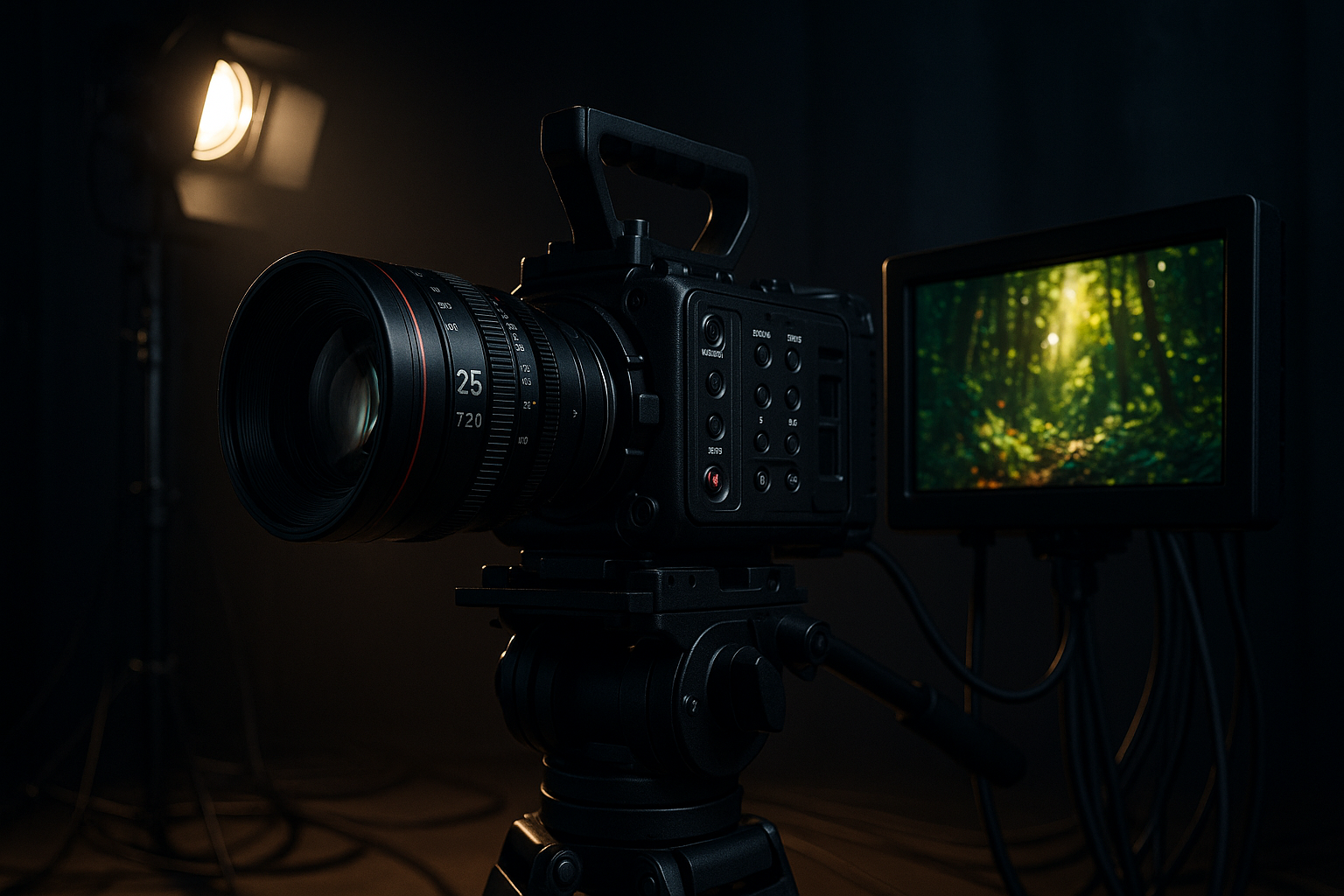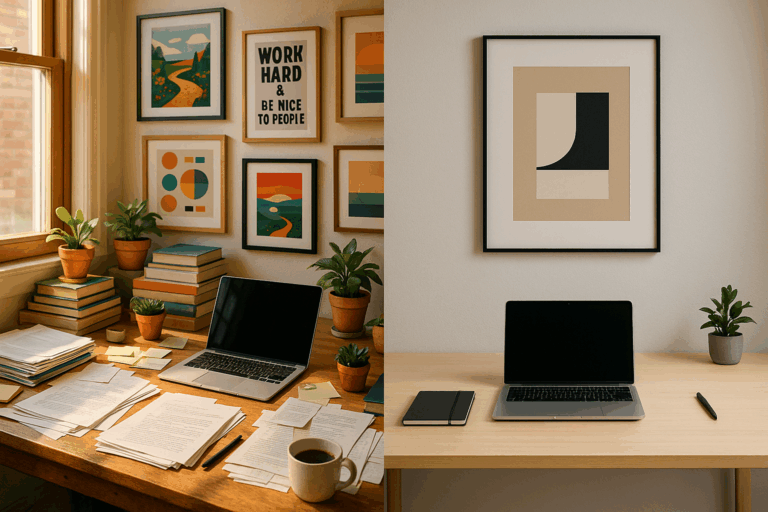Have you ever wondered how professional filmmakers create visually compelling scenes that rivet the audience’s attention? The secret ingredient might surprise you – it’s contrast. In the world of film making and video editing, contrast is not merely about the difference between light and dark. It’s a powerful tool that can dramatically alter the mood, tone, and storytelling of your footage. 🎥
In this comprehensive guide, we will delve deep into the concept of contrast, exploring its different aspects, from color to motion, and texture to tone. 🌈✨ We will learn how to manipulate these elements to add depth and dimension to your video, making it not just aesthetically pleasing, but also emotionally engaging. 💡
Unleashing the Power of Contrast
Contrast is the difference between two or more elements in a scene. It is a fundamental design principle that influences how we perceive and interpret visual information. In video production, the use of contrast can make a scene more dynamic and interesting. It can also guide the viewer’s eye to a particular subject or action, highlighting the crucial elements of your story. 🧐
How Contrast Elevates Your Footage
Using contrast effectively can transform a good video into a great one. Imagine a scene where the protagonist, dressed in a dark coat, walks through a brightly lit street. The contrast in lighting and color emphasizes the character, making them stand out in the scene. This instantly creates a visual impact, drawing the viewer’s attention to the protagonist. It’s about playing with elements such as light and shadow, color and tone, and texture and shape to add layers of meaning to your footage. 🌓🌈
Contrast: Beyond Black and White
While the concept of contrast is often associated with light and darkness, it extends far beyond that. From color contrast, which uses the color wheel theory, to tonal contrast, which is about the variation in the brightness of colors, the use of contrast is a multifaceted approach. Then there’s motion contrast, spatial contrast, and even temporal contrast, each adding a unique flavor to your footage. We’ll be breaking down each of these aspects, providing you with practical tips and techniques to leverage them effectively. 🎨🕰️
Whether you’re a professional filmmaker or a video editing enthusiast, understanding and utilizing the power of contrast can take your footage to a whole new level. It can enhance the visual appeal, add depth and detail, and most importantly, create an emotional connection with your audience. So, stay tuned as we embark on this exciting journey of unlocking the power of contrast to elevate your footage! 🚀
By the end of this guide, you’ll be equipped with a treasure trove of knowledge and practical techniques that you can immediately apply to your video editing process. With these insights, you can create visually stunning and emotionally powerful footage that will leave a lasting impact on your audience. Get ready to transform your video editing skills! 🎬🌟
Unleashing the Power of Contrast: Your Secret Weapon to Stunning Visuals
In the world of video and film production, contrast isn’t just about the difference between light and dark. It’s a powerful storytelling tool that can enhance your narrative, captivate your audience, and add depth and dimension to your footage. Let’s dive into the intricacies of contrast, how it can supercharge your visuals, and the techniques for effectively applying it.
We live in an era where viewers demand high-quality visuals that tell a story and evoke emotions. Whether you are a budding filmmaker, a video editor, or a digital marketer looking to leverage video content, understanding and skillfully using contrast can make your footage stand out.
But before we jump into the details, here’s a helpful video you may want to watch: “Unlock the Power of Contrast: Elevate Your Footage with This Secret Ingredient” by the YouTube channel, Film Riot. It’s an excellent starting point for our journey into the world of contrast.
Contrast Defined: Beyond Black and White
In simple terms, contrast refers to the difference between the lightest and darkest parts of an image. But in the realm of film and video production, it takes on a more profound meaning. Contrast can be used to create visual interest, guide viewers’ eyes to specific parts of the scene, and even evoke specific emotions.
Contrast can manifest in various forms, not just tonal (light and dark) but also in terms of color, texture, size, and shape. For example, juxtaposing a vibrant color against a dull one creates color contrast, while positioning a small object near a large one results in size contrast.
An understanding of these different types of contrast and how to use them can drastically enhance your footage, making it more dynamic and engaging.
The Science Behind Contrast
The human visual system is inherently designed to detect and respond to contrast. Our eyes are attracted to areas of high contrast as they often indicate important features in our environment. This principle holds in video production as well. By manipulating contrast, you can direct the viewer’s gaze to a specific part of the frame or create a visual hierarchy within your scene.
Research in visual perception also shows that contrast can impact emotional responses. High-contrast images tend to be perceived as more exciting and dynamic, while low-contrast ones often evoke feelings of calm and tranquility. By playing with contrast levels in your footage, you can subtly influence your viewers’ emotional state and their interpretation of the narrative.
Moreover, contrast can enhance the perceived depth in a scene. By varying the contrast between foreground and background elements, you can create an illusion of depth and volume, making your footage appear more three-dimensional.
Contrast Techniques in Practice
There are several ways you can apply contrast in your footage. One of the most common techniques is tonal contrast. By varying the lightness and darkness in a scene, you can create a sense of drama and tension. Think of a classic noir film where the interplay of shadows and light adds to the suspense.
Color contrast is another powerful tool. By placing contrasting colors next to each other, you can make certain elements pop and guide the viewer’s eye. For example, a bright red object in a field of green will instantly grab attention.
Spatial contrast, such as the size and shape of objects, can also create visual interest. For instance, a large object next to a smaller one can create a sense of scale and depth.
Enhancing Contrast in Post-Production
While you can create contrast while shooting, post-production offers additional opportunities for enhancement. Software like Adobe Premiere Pro or DaVinci Resolve provides various tools for tweaking contrast, such as curves, levels, and color grading tools.
In post-production, you can adjust the overall contrast of your footage or target specific areas for enhancement. For example, you can increase the contrast between your subject and the background to make the former stand out.
Remember, subtlety is key when adjusting contrast in post-production. Overdoing it can result in a loss of detail in the shadows and highlights, leading to a less realistic image.
Contrast in Context: Case Studies
Contrast has been used masterfully in many iconic films. One classic example is “The Godfather.” Cinematographer Gordon Willis used low-key lighting to create high contrast between light and dark areas, contributing to the film’s tense and dramatic atmosphere.
On the other hand, Wes Anderson’s “Moonrise Kingdom” is a showcase of color contrast. The film is filled with vibrant, contrasting colors that create a unique visual style and help tell the story.
These examples illustrate how contrast, when used effectively, can enhance storytelling and captivate viewers. Whether you’re making a short film, a documentary, or a commercial, consider how contrast can be used to improve your visuals.
Wrapping it Up
Contrast is indeed a powerful ingredient in video production. It’s a versatile tool that can add depth, create visual interest, and evoke emotions. Mastering it requires an understanding of how different types of contrast work and how to manipulate them to serve your narrative.
Remember to take advantage of post-production tools for fine-tuning contrast and don’t be afraid to experiment. After all, filmmaking is as much about creativity as it is about technical skills.
And finally, always keep your audience in mind. Contrast, like all visual tools, should ultimately serve to engage your viewers and enhance their viewing experience.
Further Learning
If you’re interested in delving deeper into the world of contrast in video production, there are plenty of resources available. Online platforms like Skillshare and Coursera offer courses on video editing and color grading, where you can learn more about contrast and other visual tools.
Additionally, many professionals share their insights and techniques on YouTube and other social media platforms. Consider subscribing to channels like Film Riot, Cinecom.net, and Peter McKinnon for regular tips and tutorials.
With continuous learning and practice, you can unlock the full potential of contrast and elevate your footage to new heights. So why wait? Start exploring the power of contrast today.

Conclusion
In the realm of technology and engineering, we have traversed a long path, discussing numerous intricate subjects and phenomena. Now, as we reach the conclusion of this comprehensive article, it’s time to encapsulate the major points we covered and to understand why they hold significant importance in today’s digital age.
Initially, we delved into the role and impact of software engineering, its principles, and applications in various sectors. We explored how software engineering has transformed our everyday lives, fueling advancements in domains such as healthcare, finance, education, entertainment, and more. We examined how software applications, powered by innovative technologies, are shaping the future of these industries.
Subsequently, we navigated through the nuances of technical writing, its necessity, and relevance in fields like IT and Engineering. We saw how effective technical writing can simplify complex concepts, making them easily understandable and more accessible to a broader audience. This ability not only enhances the dissemination of technical knowledge but also fosters an environment conducive to continuous learning and growth.
Throughout our discussion, we kept circling back to the interplay between software engineering and technical writing. The pivotal role that both these fields play in effectively communicating and implementing technical concepts was extensively highlighted. We saw how the two fields complement each other, contributing to the development and propagation of innovative technological solutions.
The importance of this topic in the current digital age cannot be overstated. As we move forward into an era dominated by technology, understanding these concepts will not only broaden our knowledge horizon but also equip us with the skills to adapt and thrive in this evolving landscape.
Now that we have concluded our journey, it’s over to you, dear reader. How do you perceive the relationship between software engineering and technical writing? How has your understanding of these fields evolved after reading this article? Feel free to share your thoughts and insights in the comments section below.👇
If you found this article valuable, do not hesitate to share it with others who might benefit from it. You never know how a small gesture can contribute to someone’s learning journey.🔗
Before we sign off, remember that learning is a lifelong journey. Continually seek knowledge, stay curious, and never stop exploring. 💡
Source: [Rodrigo Almeida](https://www.rodrigoalmeida.com)
Don’t forget to apply what you’ve learned. After all, “Knowledge is of no value unless you put it into practice.” – Anton Chekhov.
Until next time, stay tech-savvy!🚀
Please note: This article is based on currently active resources and the author’s personal experiences. Always cross-verify information from multiple sources before making any conclusions.



